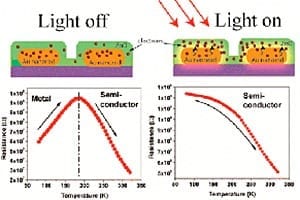Their paper is regarded as a breakthrough
ETH Zurich physicists, in collaboration with colleagues at universities in Switzerland and abroad, have made a breakthrough in the manufacture of monolithic semiconductor structures on silicon. The new structures are nearly perfect, and likely to revolutionise not only X-ray technology.
Microelectronics is no longer imaginable without silicon technology: the material is cheap, readily available and mechanically robust. However, even silicon cannot do everything. Certain materials have properties superior to those of silicon. This is why researchers are looking for ways to unite this element with other semiconductors such as germanium so as to combine and extract the best qualities from the two different materials and to open up new applications.
However, combining silicon with other semiconductors is not an easy feat. In the past, expensive and time-consuming bonding techniques were needed to combine silicon with devices made from elements of a different composition. “The elegant alternative of monolithic integration is easily done only if the interatomic spacings and thermal properties of silicon and the combination material differ slightly, or if the layers are comparatively thin”, says Professor Hans von Känel, Private Docent at ETH Zurich. This is why, until now, there has been no success in constructing thick monolithic layers of germanium on silicon, because defects occur in the crystal lattice. In addition, the silicon wafers warp or the stacks of layers crack under thermal stress, making the electronic components unusable.
The ETH Zurich researchers, led by Hans von Känel and in collaboration with colleagues at the Swiss Centre for Electronics and Microtechnology (CSEM) Neuchâtel, the Politecnico di Milano and the University of Milan-Bicocca, have now found a way to solve this problem. Their paper has just been published in the scientific journal Science and is regarded as a breakthrough, which is why it was also chosen as the cover story.
via PhysOrg ᔥ
Bookmark this page for “microelectronics” and check back regularly as these articles update on a very frequent basis. The view is set to “news”. Try clicking on “video” and “2” for more articles.









